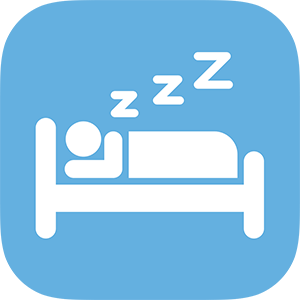Sleep apnea syndrome is a pathology often unrecognized and yet quite frequent. Sleep apnea is characterized by breath stops of a duration greater than or equal to 10 seconds causing the person to wake up. Given the possible health consequences, it is a syndrome that must be recognized and treated in time.

Sleep apnea
The different types of sleep apnea
Sleep apnea is defined as a stop of breathing for at least 10 seconds during sleep and hypopnea is a decrease in the amplitude of breathing. Apnea and hypopnea can occur hundreds of times over the course of a single night, in which case it is called a Sleep Apnea Syndrome (SAS)
There are 3 forms of sleep apnea :
Obstructive Sleep Apnea Syndrome
Obstructive sleep apnea syndrome is the most common form of sleep apnea, and accounts for up to 85% of apnea diagnosis. This sleep disorder is caused by a blockage of the upper airways in the nose or throat, causing the air to stop flowing to the lungs.The airways might become blocked for a variety of reasons :
- The muscles of the mouth and throat relax too much during sleep
- The circumference of the neck narrows the airways
Central Sleep Apnea Syndrom
Central sleep apnea (CSA) is rare and can be caused by certain medical treatments. In this case, the air stops circulating in the body because the brain no longer requires breathing effort from the muscles responsible for breathing. People suffering from this sleep disorder will not have any visible symptoms, therefore this pathology may remain undetected.
Mixed Sleep Apnea
In some cases, sleep apnea may be composed of OSAS and CSA This association of two sleep disorders is defined as sleep apnea.
Evocative signs of sleep apnea
 Relatives and friends have an important role to play in the detection of sleep apnea, and often the spouse or close ones are the first to witness an embarrassment during sleep. Sleep apnea causes one of several of these symptoms
Relatives and friends have an important role to play in the detection of sleep apnea, and often the spouse or close ones are the first to witness an embarrassment during sleep. Sleep apnea causes one of several of these symptoms
- A noisy snoring
- Breathing breaks
- Nocturnal awakenings with a choking sensation
- Repeated changes of position in the bed
Most of the time, the person who suffers from sleep apnea is not aware of the breathing breaks. On the other hand, some symptoms (diurnal or nocturnal) may occur such as headaches on awakening, drowsiness or excessive irritability.
Main causes of sleep apnea
Sleep apnea can happen at any age. Before 60, it’s mainly men who suffer from the illness. Beyond that, women suffer as much.
Obesity, smoking, alcohol and sedative drugs are factors that promote the onset and development of the disease. Once triggered, sleep apnea syndrome then increases the risk of developing high blood pressure and cardiovascular disease (heart failure, heart rhythm disorders, coronary artery disease, stroke). The interrelation between sleep apnea, obesity, increased risk of diabetes and presence of fats in the blood is increasingly evoked.

